The compact SUV market continues to thrive as automotive manufacturers innovate and develop vehicles that cater to the needs of modern drivers. Among the choices available, the Citroën C3 and Suzuki Vitara stand out for their distinctive styles and exceptional features. This article dives into a detailed comparison of these two models, examining technical aspects and innovations that could influence your buying decision.
Citroen C3 vs Suzuki Vitara – Performance, range & efficiency compared
Compare performance, boot capacity, efficiency and price at a glance.
Find out which car is the better choice for you – Citroen C3 or Suzuki Vitara?
Design and Dimensions
Both the Citroën C3 and Suzuki Vitara embody the SUV essence, yet their design philosophies present varied interpretations. The Citroën C3 measures 4015 mm in length, 1755 mm in width, and 1567 mm in height, giving it a compact and agile appearance. In contrast, the Suzuki Vitara is slightly larger at 4185 mm in length, 1775 mm in width, and 1595 mm in height, providing a more robust and rugged look.
The C3 features a modern aesthetic with smooth lines and a distinctive front grille, contributing to an attractive user-friendly design. The Vitara, however, emphasizes an adventurous appeal with its boxy silhouette and bold stance, making it more suitable for off-road excursions. Both models have five doors and comfortably accommodate five passengers, ensuring practicality for everyday use.
Engine Options and Performance
When it comes to engine options, the Citroën C3 offers a variety of configurations, including petrol, electric, and petrol MHEV engines, providing power ratings from 101 to 113 HP. The C3’s engines are complemented by a front-wheel-drive system, ensuring a smooth driving experience on city roads. The model’s 1.2-liter 3-cylinder engine achieves a fuel consumption of approximately 5.5 to 5.6 L/100km, presenting a commendable balance between performance and efficiency.
On the other hand, the Suzuki Vitara showcases a different edge with hybrid offerings, featuring petrol MHEV and full hybrid options that can produce up to 129 HP. With both front-wheel and all-wheel drive options, the Vitara is versatile enough to handle a variety of terrains while maintaining a fuel consumption range of 5.0 to 5.6 L/100km. The Vitara's 1.4-liter 4-cylinder engine is also known for its impressive torque of 235 Nm, enhancing its performance during acceleration.
Acceleration and Speed
Speed enthusiasts may appreciate the performance metrics of these two cars. The Citroën C3 can accelerate from 0-100 km/h in about 9.9 to 11 seconds, depending on the engine variant. The top speed reaches 183 km/h, making it suitable for both city and highway driving.
Meanwhile, the Suzuki Vitara boasts acceleration figures that outshine the C3, with times ranging from 9.5 to 10.2 seconds for its various configurations. It can achieve a top speed of 190 km/h, indicating its capability for more spirited driving experiences. This performance edge makes the Vitara appealing for those desiring a bit more excitement behind the wheel.
Fuel Efficiency and Environmental Impact
Environmental concerns and fuel efficiency have become pivotal in the automotive industry. The Citroën C3, with a CO2 emissions range of 123 to 126 g/km, falls into CO2 efficiency classes D and A, indicating a moderate approach to emissions. Notably, the electric variant boasts a zero-emission option, showcasing Citroën's commitment to sustainable driving.
In comparison, the Suzuki Vitara excels in this area with emissions ranging from 113 to 129 g/km, landing it firmly within CO2 efficiency class C and D. This eco-friendly stance, paired with the hybrid model's capabilities, makes the Vitara a strong contender for environmentally conscious consumers.
Interior Space and Innovation
Space and comfort remain top priorities in the compact SUV segment. The Citroën C3 offers a trunk capacity of 310 liters, which is respectable for everyday use. Features such as a well-designed interior, advanced infotainment systems, and ergonomic seating reflect Citroën’s focus on passenger comfort.
Conversely, the Suzuki Vitara shines with a larger trunk capacity of 375 liters, granting it an advantage for those requiring extra storage. The cabin is equipped with a host of modern technologies, including a user-friendly touchscreen infotainment system and various safety features, presenting an appealing package for tech-savvy drivers.
Conclusion
Both the Citroën C3 and Suzuki Vitara offer unique advantages, catering to various driving needs and preferences. The C3 balances style and efficiency with versatile engine options, while the Vitara excels in performance and practicality, particularly for those seeking adventure. Ultimately, the decision between these two models hinges on individual priorities—whether you prefer the compact agility of the C3 or the robust versatility of the Vitara.
Here’s where it gets real: The technical differences in detail
Costs and Efficiency:
Price and efficiency are often the first things buyers look at. Here it becomes clear which model has the long-term edge – whether at the pump, the plug, or in purchase price.
Citroen C3 has a clearly advantage in terms of price – it starts at 13700 £, while the Suzuki Vitara costs 23600 £. That’s a price difference of around 9866 £.
Both cars consume an average of 5 L per 100 km – no difference here.
Engine and Performance:
Power, torque and acceleration are the classic benchmarks for car enthusiasts – and here, some clear differences start to show.
When it comes to engine power, the Suzuki Vitara has a slightly edge – offering 129 HP compared to 113 HP. That’s roughly 16 HP more horsepower.
In acceleration from 0 to 100 km/h, the Suzuki Vitara is barely noticeable quicker – completing the sprint in 9.50 s, while the Citroen C3 takes 9.90 s. That’s about 0.40 s faster.
In terms of top speed, the Suzuki Vitara performs barely noticeable better – reaching 190 km/h, while the Citroen C3 tops out at 183 km/h. The difference is around 7 km/h.
There’s also a difference in torque: Suzuki Vitara pulls a bit stronger with 235 Nm compared to 205 Nm. That’s about 30 Nm difference.
Space and Everyday Use:
Whether family car or daily driver – which one offers more room, flexibility and comfort?
Both vehicles offer seating for 5 people.
In curb weight, Citroen C3 is minimal lighter – 1226 kg compared to 1255 kg. The difference is around 29 kg.
In terms of boot space, the Suzuki Vitara offers a bit more room – 375 L compared to 310 L. That’s a difference of about 65 L.
In maximum load capacity, the Citroen C3 performs hardly perceptible better – up to 1220 L, which is about 100 L more than the Suzuki Vitara.
When it comes to payload, Citroen C3 minimal takes the win – 423 kg compared to 400 kg. That’s a difference of about 23 kg.
Who comes out on top?
Overall, the Suzuki Vitara shows itself to be wins by a narrow margin and secures the title of DriveDuel Champion.
It convinces with the more balanced overall package and proves to be the more versatile choice for everyday use.
 @ Suzuki Motor Corporation
@ Suzuki Motor Corporation
Suzuki Vitara
Citroen C3
The Citroën C3 is a cheeky little city car that turns heads with its bold, quirky styling and a surprisingly comfy, well-thought-out interior. It’s an ideal companion for urban life — easy to park, friendly to drive and built to make everyday trips feel a bit more fun without breaking the bank.
details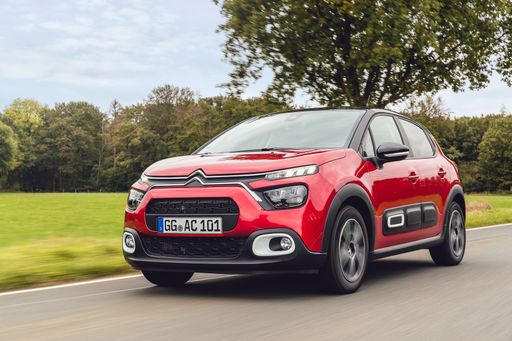 @ Citroën / Stellantis Media
@ Citroën / Stellantis Media
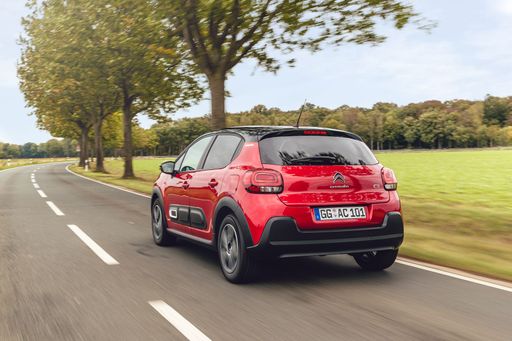 @ Citroën / Stellantis Media
@ Citroën / Stellantis Media
 @ Citroën / Stellantis Media
@ Citroën / Stellantis Media
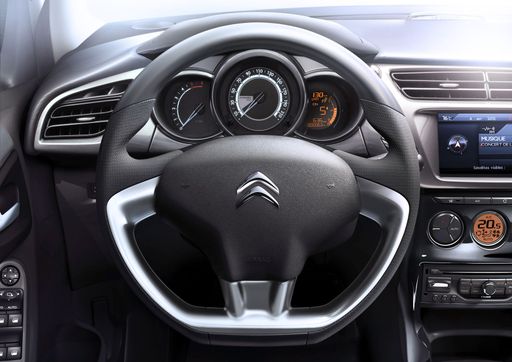 @ Citroën / Stellantis Media
@ Citroën / Stellantis Media
Suzuki Vitara
The Vitara is a city-smart SUV with a cheeky streak of off-road promise, perfect for drivers who want practicality without pretense. It’s honest, easy to live with and surprisingly likeable, a sensible companion for everyday adventures and weekend escapes.
details @ Suzuki Motor Corporation
@ Suzuki Motor Corporation
 @ Suzuki Motor Corporation
@ Suzuki Motor Corporation
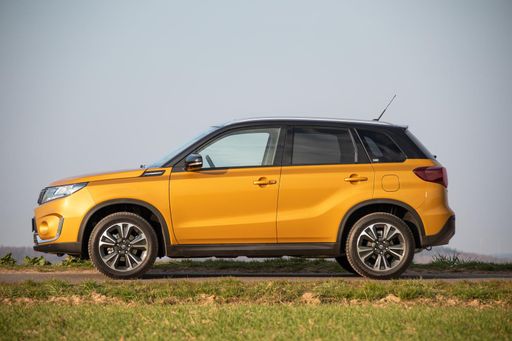 @ Suzuki Motor Corporation
@ Suzuki Motor Corporation
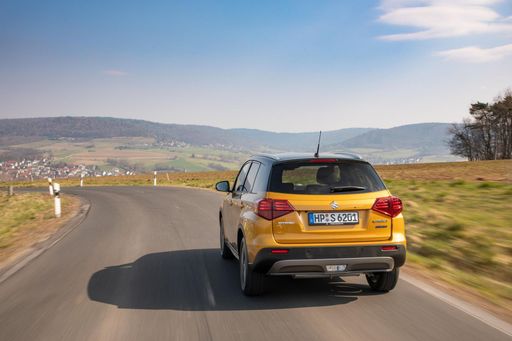 @ Suzuki Motor Corporation
@ Suzuki Motor Corporation
 @ Suzuki Motor Corporation
@ Suzuki Motor Corporation
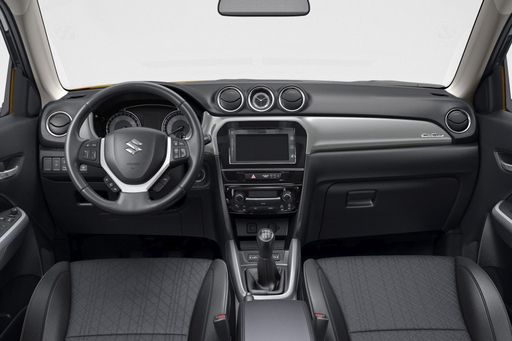 @ Suzuki Motor Corporation
@ Suzuki Motor Corporation
 @ Citroën / Stellantis Media
@ Citroën / Stellantis Media
|
 @ Suzuki Motor Corporation
@ Suzuki Motor Corporation
|
|
|
|
Costs and Consumption |
|
|---|---|
|
Price
13700 - 23800 £
|
Price
23600 - 30900 £
|
|
Consumption L/100km
5 - 5.6 L
|
Consumption L/100km
5 - 5.9 L
|
|
Consumption kWh/100km
16.6 - 17.2 kWh
|
Consumption kWh/100km
-
|
|
Electric Range
206 - 324 km
|
Electric Range
-
|
|
Battery Capacity
-
|
Battery Capacity
-
|
|
co2
0 - 126 g/km
|
co2
113 - 138 g/km
|
|
Fuel tank capacity
44 L
|
Fuel tank capacity
47 L
|
Dimensions and Body |
|
|---|---|
|
Body Type
SUV
|
Body Type
SUV
|
|
Seats
2 - 5
|
Seats
5
|
|
Doors
5
|
Doors
5
|
|
Curb weight
1226 - 1518 kg
|
Curb weight
1255 - 1395 kg
|
|
Trunk capacity
310 L
|
Trunk capacity
289 - 375 L
|
|
Length
4015 mm
|
Length
4185 mm
|
|
Width
1755 mm
|
Width
1775 mm
|
|
Height
1567 mm
|
Height
1595 mm
|
|
Max trunk capacity
1220 L
|
Max trunk capacity
1046 - 1120 L
|
|
Payload
227 - 423 kg
|
Payload
375 - 400 kg
|
Engine and Performance |
|
|---|---|
|
Engine Type
Petrol, Electric, Petrol MHEV
|
Engine Type
Petrol MHEV, Full Hybrid
|
|
Transmission
Manuel, Automatic
|
Transmission
Manuel, Automatic
|
|
Transmission Detail
Manual Gearbox, Reduction Gearbox, Dual-Clutch Automatic
|
Transmission Detail
Manual Gearbox, Automated Manual, Automatic Gearbox
|
|
Drive Type
Front-Wheel Drive
|
Drive Type
Front-Wheel Drive, All-Wheel Drive
|
|
Power HP
101 - 113 HP
|
Power HP
110 - 129 HP
|
|
Acceleration 0-100km/h
9.9 - 12 s
|
Acceleration 0-100km/h
9.5 - 12.7 s
|
|
Max Speed
125 - 183 km/h
|
Max Speed
180 - 190 km/h
|
|
Torque
120 - 205 Nm
|
Torque
235 Nm
|
|
Number of Cylinders
3
|
Number of Cylinders
4
|
|
Power kW
74 - 83 kW
|
Power kW
81 - 95 kW
|
|
Engine capacity
1199 cm3
|
Engine capacity
1373 - 1462 cm3
|
General |
|
|---|---|
|
Model Year
2024 - 2025
|
Model Year
2024 - 2025
|
|
CO2 Efficiency Class
D, A, C
|
CO2 Efficiency Class
D, C, E
|
|
Brand
Citroen
|
Brand
Suzuki
|
What drive types are available for the Citroen C3?
The Citroen C3 is offered with Front-Wheel Drive.
The prices and data displayed are estimates based on German list prices and may vary by country. This information is not legally binding.
